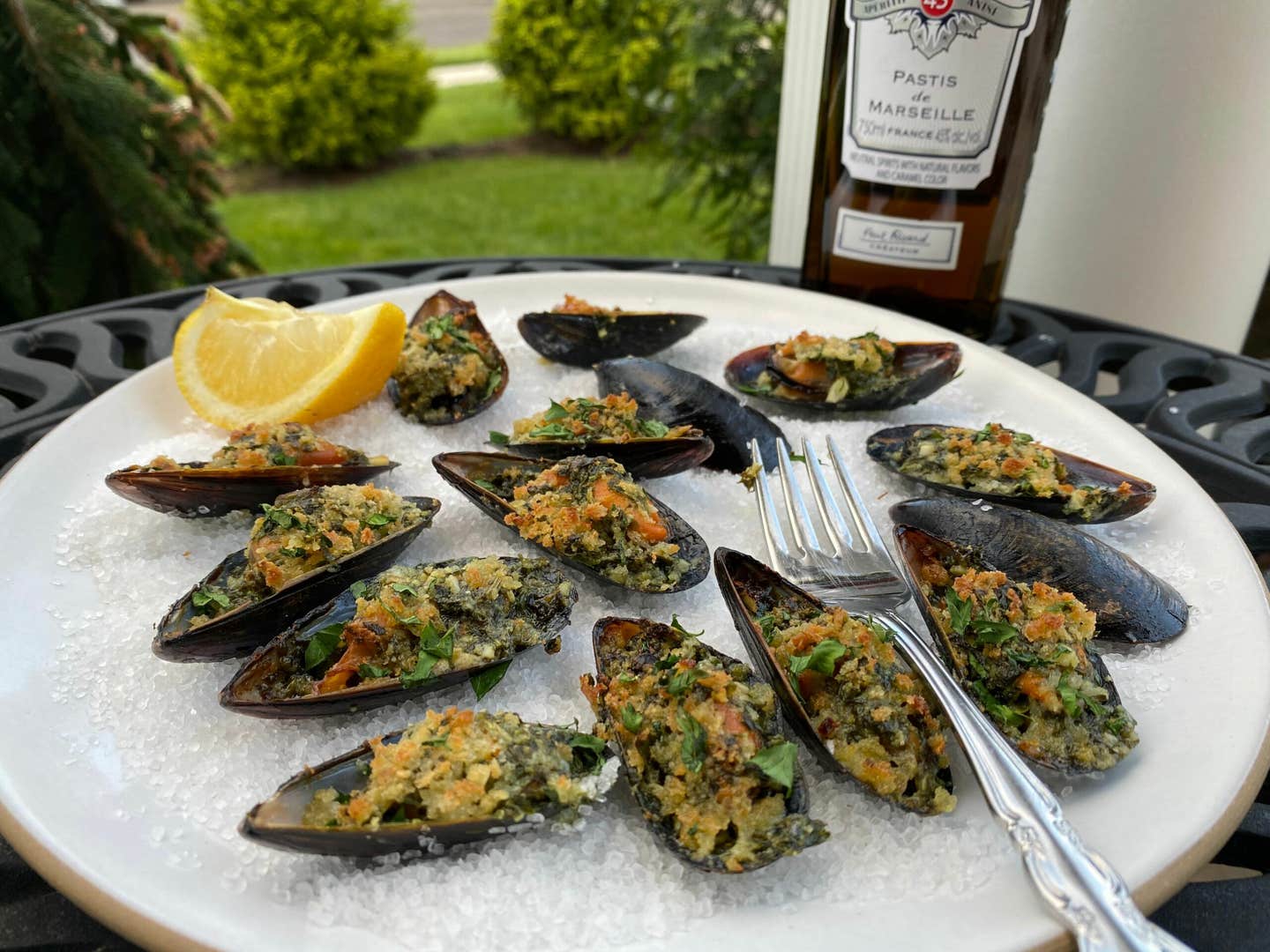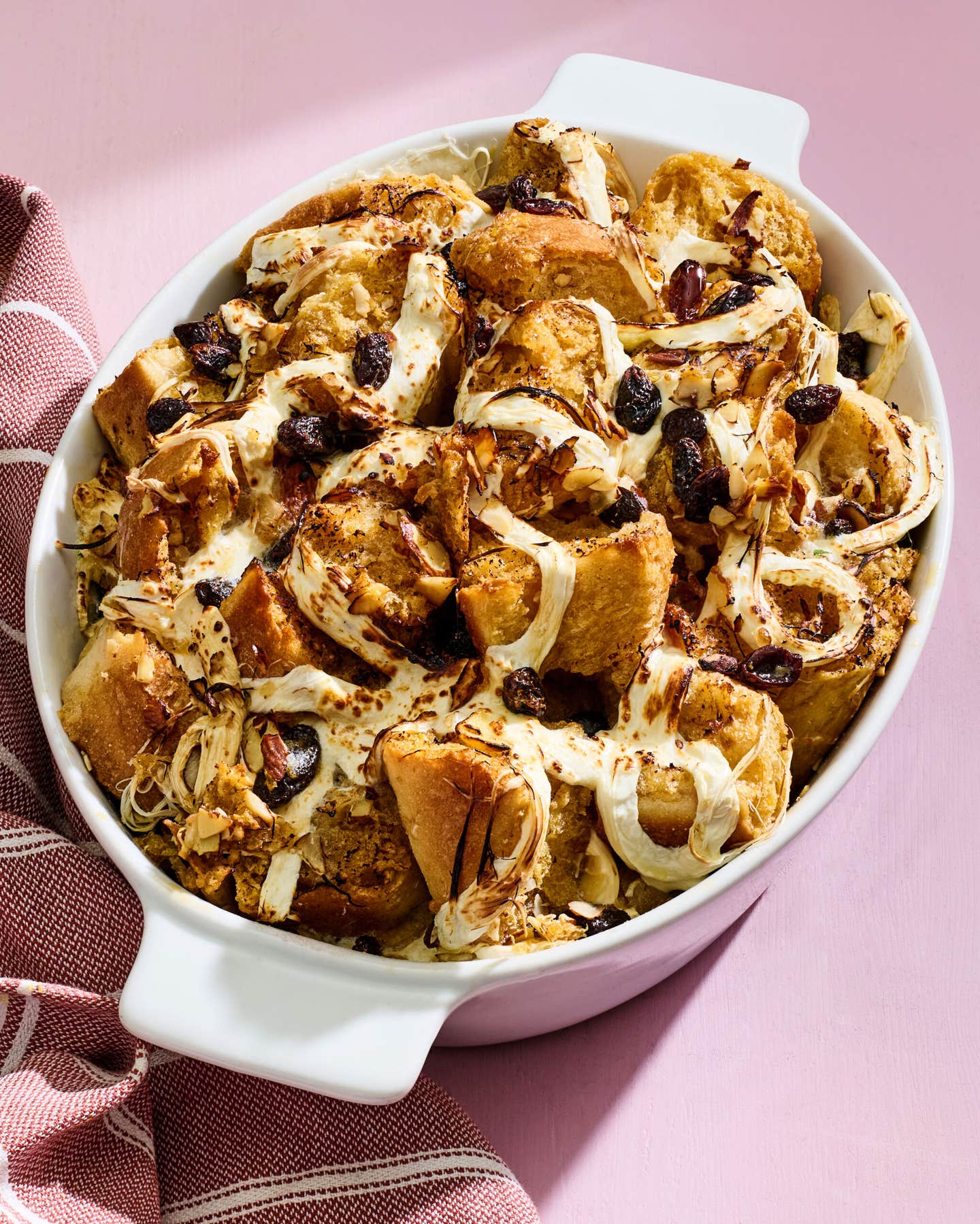
This Is What Your Mussels Have Been Missing
Shellfish shines when finished with a fragrant French anisette.
Some of the world’s greatest dishes demand a nip of wine or spirits to reach their full potential. Welcome to Splash in the Pan, where writer and drinks expert Tammie Teclemariam teaches you how to bring them to life.
To wine drinkers, the South of France evokes pale rosé and coarse red blends, but for me no drink is more emblematic to that sunny Medeterranean coast than the herb-tinged anisette called pastis. Redolent of the oily, almost numbing flavor of anise, pastis is something of an acquired taste, though the effect is more subdued when it’s properly served: Poured over ice and diluted to taste with an accompanying pitcher of water. When enjoyed this way, the intensely extracted spirit transforms into a refreshing long drink perfect for passing the summer hours away.
Technically an aperitif, a glass of pastis will certainly awaken your appetite if it’s doing its job. And while you might think that such a distinctive drink would clash with food, its potency is actually the spirit’s strength. Pastis stands up to pungent ingredients like garlic, spice, and fat, taming those punchy flavors without overpowering. Its gentle herbal notes are a natural complement to the earthy sweetness of seafood—particularly shellfish.
"The spirit was initially intended to replace absinthe, the overconsumption of which had been blamed for the decline of early 20th century French society."
Marseille native Paul Ricard originally developed pastis in 1932—in fact, the word “pastis” didn’t even exist until Ricard named his dupe after a portmanteau of the Provencal “pastisson” and Italian “pasticcio,” both meaning “mixture.” The spirit was initially intended to replace absinthe, the overconsumption of which had been blamed for the decline of early 20th century French society. While his recipe was similar to other drinks developed at the time (including Parisian Pernod), Ricard’s Marseillais brand quickly rose the ranks to become the preferred French anisette, inspiring a plethora of local imitators and establishing the category as a cornerstone of the convivial Southern French lifestyle. Today there are a handful of pastis brands widely distributed in the U.S., including the original Ricard, Pastis 51, and Henri Bardouin, all differing somewhat in composition, but always showcasing a similar base blend of star anise, anise seed, and liquorice root.
Even if you don’t like sipping the stuff, the intensity of undiluted pastis makes it a handy kitchen staple. Its sweet perfume can complement or mimic herbal notes like tarragon, basil, and fennel. A shot or two is de rigueur in traditional bouillabaisse, and pastis can even uplift braised chicken or rabbit. In a pinch, it stands in nicely for fresh tarragon in a quick oyster mignonette.
Although pastis contains less sugar than many other liqueurs, the overall impression is still quite sweet from sweet-tasting compounds (anethole and glycyrrhizin) in the aromatics. This balance makes it especially well-suited to savory recipes. Exact formulae are typically kept under wraps, but are said to include other herbs and spices, among them rosemary, thyme, angelica root, and nutmeg. In comparison, anisettes from elsewhere—think sambuca, arak, and raki—are typically made with only a single spice (usually either star anise or anise seed). These simple liqueurs can be used for cooking as well, though their sugar levels can vary widely, so don’t assume a one-to-one substitution. Absinthe, too, works nicely in the kitchen; its higher alcohol content provides an even more concentrated flavor, but certain blends are far more bitter than others, so add this spirit slowly, and to taste.
Pastis plays beautifully with all sorts of seafood dishes, but I find that it truly harmonizes the elements in broiled oysters Rockefeller. Typically topped with a compound butter flavored with spinach, garlic, and herbs, I prefer to add that herbaceous note with a splash of pastis instead. (Think of this like using vanilla extract instead of whole vanilla bean; the flavor in the spirit combines more subtly than the raw ingredient.) The addition makes hot shellfish taste more like the sea, rounding out their vegetal and earthy flavors with a slight sweetness, the alcohol intensifying the overall aroma of the dish.
Sourcing and shucking fresh oysters isn’t something I normally make the time for, but I like to use this pastis-spiked Rockefeller butter on other seafood dishes as well. It’s great on broiled fish for an easy weeknight dinner, and for a low-stress-but-still-fancy starter, you could do worse than fresh mussels: Simply steam their shells open in white wine, split, and slather the meaty bivalves with the heady anisette butter. To gild the lily, I sprinkle on a little extra pastis before broiling the mussels until they sizzle, then serve them hot, on the half shell and with enough bread to soak up any extra juices.
Keep Reading
Continue to Next Story










